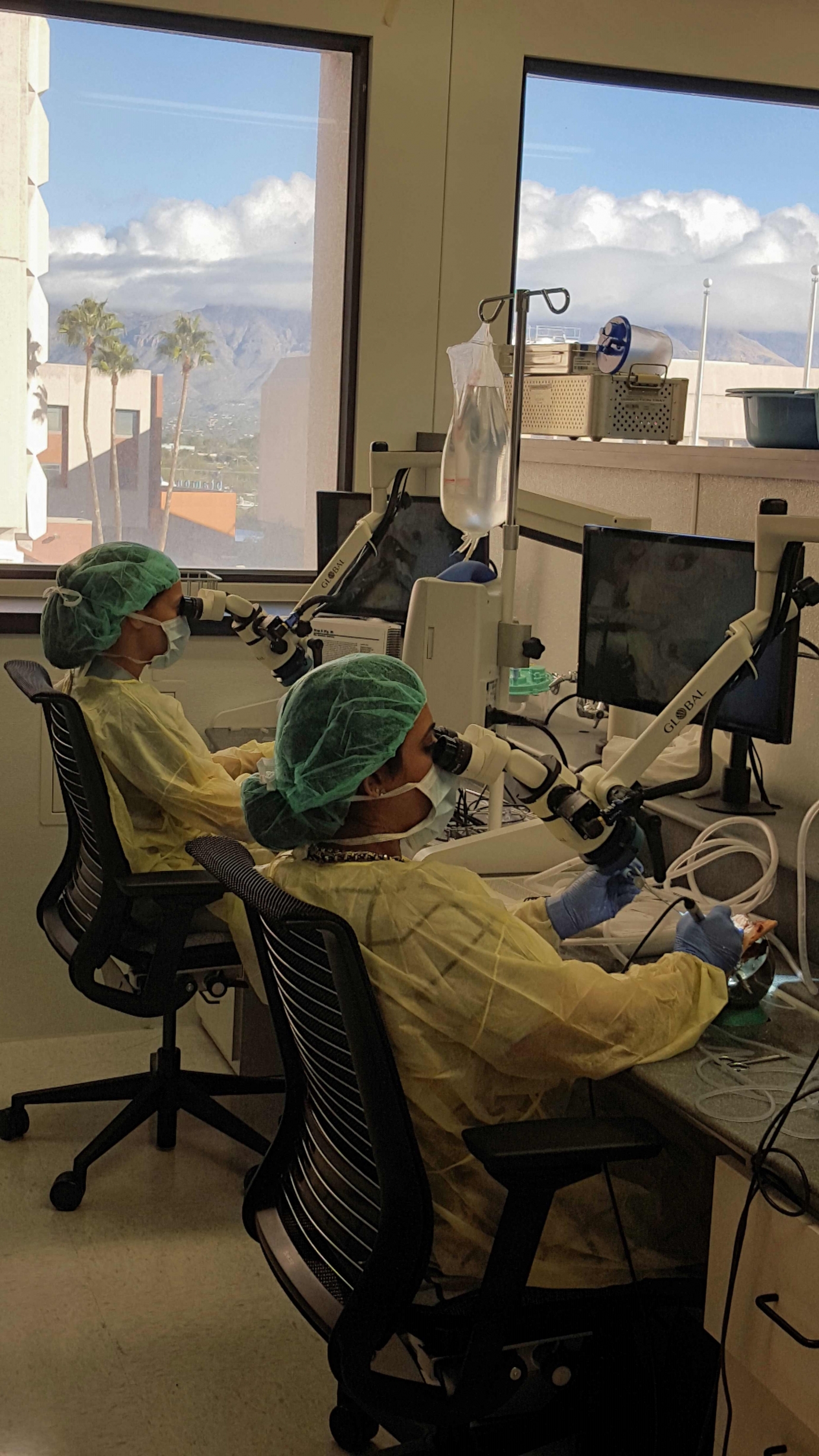Head and neck surgery dissection in the laboratory plays an important role in the education, research, training of residents and young surgeons in Otorhinolaryngology. The three dimensional anatomy of the head and neck makes it challenging for young surgeons to operate, and serious morbidity and mortality can occur from injuring vital structures in the head and neck and skull base region while performing surgery. Also dissection in the lab is essential to developing innovative surgical techniques, one particularly challenging area for otolaryngology surgery trainees is achieving mastery of the middle ear, mastoid and temporal bone for surgical approaches to tumors of the skull base. It is universally accepted that repeated dissection of the temporal bone is essential to understanding the core anatomy and to develop safe otological skills.
Currently our surgical skills and temporal bone laboratory contain two surgical simulation workstations equipped with microscopes, electric drills with foot pedals, surgical instruments, temporal bone mounts, and suction/irrigation. The stations also have computer video monitors to enable the class instructor to observe trainee hands on technique. The residents have access to the lab 24/7 to practice skills independently. Our goals is to add 3-4 additional stations in a new space dedicated to surgical skills training. This will meet the growing complement of residents as we ultimately increase to 10 residents by year 2025.
The expanded laboratory will provide the ideal environment to teach fundamental and advanced technical skills and procedures. We envision a facility that is conducive for didactic lectures as well as hands-on anatomy and skills training. Beyond resident training, this facility will also offer practicing surgeons (faculty as well as community physicians) a spectrum of educational opportunities, including new procedures and emerging technologies.
Support:

